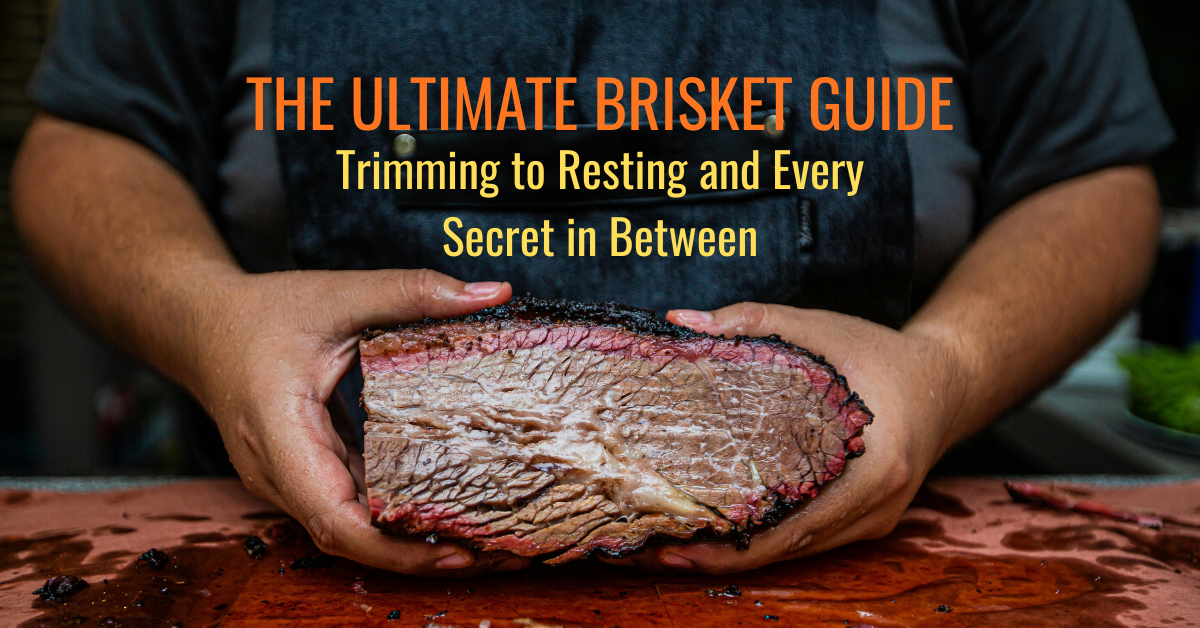You’ve spent half a day tending a brisket. The bark looks perfect, your thermometer says it’s done, but if you slice into it right away, you’ll lose the juices that make it tender and moist.
Resting is one of the most overlooked steps in barbecue, yet it is one of the most important. A proper rest can turn a good brisket into a legendary one. In this guide, we’ll cover why resting matters, how long to wait, which temperatures to watch, and the best methods to hold brisket hot without drying it out.
Why Resting Brisket Matters
When brisket cooks, heat pushes liquid toward the surface. Resting gives the meat time to relax and allows those juices to settle back into the muscle fibers. That’s the difference between slices that are juicy and slices that dry out on the board.
👉 Pro Tip: Skipping the rest can undo 12 hours of work in less than a minute.
Pull Temperature
Brisket is usually ready to pull from the smoker when it reaches 200–205°F internal and feels probe-tender. That means a thermometer or skewer slides in smoothly, like butter.
Some briskets finish earlier, closer to 198°F, while others may need to push closer to 208°F. Always trust the feel more than the number.
Best Resting Methods
1. Countertop Rest (Short Rest)
- When to use: Serving right away.
- How: Keep brisket wrapped and let it rest on a cutting board or counter.
- Goal temp: Allow it to drop from 200–205°F down to 140–150°F before slicing.
- Why it works: Juices have time to redistribute while the meat is still warm and tender.
⚠️ Food Safety Note: Keep brisket above 140°F before serving.
2. Cooler Rest (Most Popular Method)
- When to use: When you need to hold brisket for hours before serving.
- How:
- Pull brisket at 200–205°F when probe-tender.
- Let it cool slightly on the counter to about 170–175°F.
- Keep it wrapped, add towels, and place in a clean, dry cooler.
- Hold time: 3 to 6 hours safely.
👉 Pro Tip: Do not put a 200°F brisket straight into the cooler. Carryover cooking can push it above 210°F and dry it out.
3. Home Oven Rest (The Easy Alternative)
- When to use: At home when you want steady heat without special gear.
- How: Most household ovens can be set as low as 170°F, which works well for holding brisket. Wrap the brisket tightly in butcher paper or foil, place it in a roasting pan, and slide it into the oven.
- Goal temp: Maintain between 150–170°F internal for safe, hot holding.
- Hold time: 2 to 4 hours comfortably, sometimes longer depending on your oven’s consistency.
- Why it works: It mimics a warming cabinet without extra equipment and is especially helpful if you are resting overnight or serving later in the day.
👉 Pro Tip: Place a small pan of water on the bottom rack of the oven to keep humidity up and prevent the brisket from drying out.
4. Holding Box or Warming Oven (Pro Method)
- When to use: If you have access to restaurant equipment or a warming cabinet.
- How: Place wrapped brisket in a holding box or oven set between 150–165°F.
- Hold time: Up to 6 hours or more while keeping the meat safe and service-ready.
Optimal Slicing Temperature
The sweet spot for slicing brisket is 140–150°F.
- Above 160°F: Juices spill out when sliced, leaving the meat dry.
- Below 135°F: Fat congeals and texture suffers.
👉 Resting allows juices to soak back into the brisket, which is why properly rested slices stay moist and flavorful.
Tools That Help With Resting
- Butcher paper: Keeps bark intact while holding moisture.
- Cooler or Cambro: Affordable way to extend rest for hours.
- Probe thermometer: Lets you monitor temps during the hold.
- Towels or insulation: Line the cooler to trap heat.
Common Resting Mistakes
- Cutting too soon.
- Skipping the countertop cooldown before a cooler rest.
- Resting in foil only, which softens the bark.
- Holding at too high of a temp, which risks overcooking.
- Letting brisket drop below 140°F for long periods.
Final Thoughts
Resting brisket is just as important as trimming, seasoning, and fire management. Pull it around 200–205°F (or when probe-tender), rest it using a method that fits your timing, and slice it in the 140–150°F sweet spot.
Want more tips on trimming and slicing brisket?
Check out our full guide: The Ultimate Guide to Brisket Anatomy, Trimming & Slicing
Patience is not just part of barbecue… it is the key to turning a smoked brisket into a meal worth remembering.




